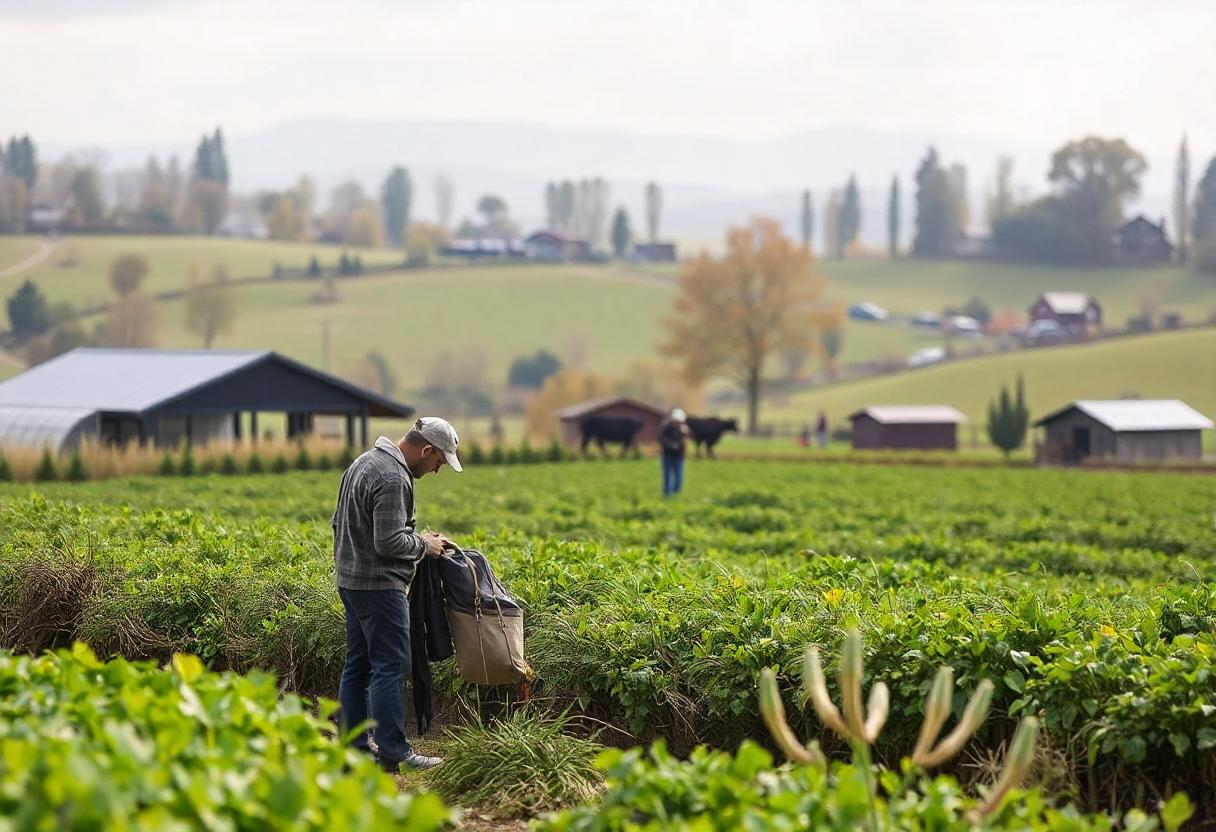
Modern farming has evolved significantly over the years, driven by technological advancements, increased demands for food, and changing environmental conditions. However, this evolution comes with its own set of challenges that farmers must navigate to sustain productivity and ensure food security. This article explores the major challenges facing modern agriculture, offering a comprehensive overview of the issues and potential solutions.
1. Climate Change
Impact on Weather Patterns: Climate change has altered weather patterns, leading to unpredictable rainfall, prolonged droughts, and extreme weather events such as floods and heatwaves. These changes affect crop yields and the viability of certain crops, making farming less predictable and more challenging.
Soil Degradation: Increased temperatures and altered precipitation patterns contribute to soil erosion, loss of soil fertility, and desertification. This degradation reduces the land’s agricultural productivity and impacts long-term sustainability.
Adaptation Strategies: Farmers are adopting climate-resilient crops, improved irrigation techniques, and soil conservation practices to mitigate the effects of climate change. Research into climate-smart agriculture is also ongoing to develop crops and practices better suited to changing conditions.
2. Soil Health
Nutrient Depletion: Intensive farming practices, including monocropping and overuse of chemical fertilizers, have led to nutrient depletion in the soil. This can result in reduced crop yields and increased reliance on synthetic inputs.
Soil Erosion: Practices such as tilling and deforestation contribute to soil erosion, which diminishes the soil’s ability to support crops and increases sedimentation in waterways.
Sustainable Solutions: Implementing practices such as crop rotation, cover cropping, and reduced tillage can help restore soil health. Organic farming and agroecology also offer methods to enhance soil fertility and reduce dependence on chemical inputs.
3. Water Management
Water Scarcity: Many regions face water scarcity due to over-extraction, pollution, and climate-induced changes in precipitation. Agriculture is a major consumer of water, and inefficient irrigation practices exacerbate the problem.
Pollution: Agricultural runoff containing pesticides, fertilizers, and other chemicals can pollute water sources, affecting both ecosystems and human health.
Conservation Techniques: Precision irrigation technologies, such as drip and sprinkler systems, help optimize water use. Additionally, adopting practices like rainwater harvesting and improving water management infrastructure can address water scarcity.
4. Pest and Disease Management
Resistance Issues: Overuse of chemical pesticides has led to the development of resistant pest and disease strains. This makes controlling pests and diseases more difficult and increases the reliance on increasingly potent chemicals.
Integrated Pest Management (IPM): IPM combines biological, cultural, and mechanical control methods to manage pests and diseases more sustainably. This approach reduces the need for chemical pesticides and minimizes environmental impact.
Research and Innovation: Ongoing research into pest-resistant crops, biological control agents, and innovative pest management practices aims to enhance the resilience of crops against pests and diseases.
5. Labor Shortages
Aging Workforce: The farming sector faces an aging workforce, with fewer young people entering the field. This creates a labor shortage that affects productivity and the ability to implement modern farming practices.
Automation and Technology: The adoption of automation and advanced technologies, such as drones, robotics, and AI, can help address labor shortages by improving efficiency and reducing the need for manual labor.
Training and Education: Investing in education and training programs for young farmers and agricultural workers can help address the labor gap and ensure the future of farming.
6. Economic Pressures
Market Volatility: Fluctuations in commodity prices, trade policies, and economic conditions can impact farmers’ incomes and financial stability. This volatility makes it challenging for farmers to plan and invest in their operations.
Access to Finance: Small and medium-sized farms often struggle to access financing for investment in new technologies and practices. Limited access to credit can hinder their ability to adapt and grow.
Diversification and Support: Diversifying crops and exploring alternative income sources can help mitigate economic risks. Additionally, government policies and financial support programs play a crucial role in stabilizing farmers’ incomes.
7. Sustainability and Environmental Impact
Resource Depletion: Modern farming practices can lead to the depletion of natural resources, including soil, water, and biodiversity. Ensuring the long-term sustainability of farming requires balancing productivity with environmental stewardship.
Environmental Regulations: Stricter environmental regulations aim to reduce the impact of farming on ecosystems, but compliance can be challenging and costly for farmers.
Sustainable Practices: Embracing sustainable farming practices, such as organic farming, conservation tillage, and agroforestry, can help reduce environmental impact and promote long-term agricultural sustainability.
8. Technological Integration
Adoption Challenges: While technology offers numerous benefits, the integration of advanced technologies into farming practices can be challenging due to costs, technical expertise, and infrastructure requirements.
Digital Divide: There is a digital divide between large-scale and small-scale farmers in terms of access to technology and information. Bridging this gap is essential for equitable technological advancement in agriculture.
Innovation and Support: Providing support and resources for farmers to adopt and effectively use new technologies can enhance productivity and address various challenges in modern farming.
Modern farming faces a complex array of challenges, from climate change and soil health to water management and economic pressures. Addressing these challenges requires a multifaceted approach that includes adopting sustainable practices, leveraging technology, and supporting farmers through education and policy initiatives. By tackling these issues head-on, the agricultural sector can work towards a more resilient, productive, and sustainable future.